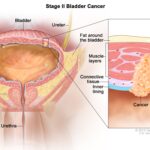Metastatic triple-negative breast cancer (mTNBC) is an aggressive form of breast cancer that lacks estrogen receptors (ER), progesterone receptors (PR), and HER2 protein expression. This makes it more challenging to treat compared to other breast cancer subtypes, as it does not respond to hormonal or HER2-targeted therapies.

Understanding Metastatic TNBC
What Makes TNBC Different?
TNBC is characterized by the absence of the three most common receptors found in breast cancer:
- Estrogen receptor-negative (ER-)
- Progesterone receptor-negative (PR-)
- HER2-negative
Due to this, targeted therapies used for hormone-positive and HER2-positive breast cancers are ineffective, leaving chemotherapy and immunotherapy as primary treatment options.
How TNBC Becomes Metastatic
Metastatic TNBC occurs when cancer spreads beyond the breast and nearby lymph nodes to distant organs, most commonly the lungs, liver, brain, and bones.
Symptoms of Metastatic Triple-Negative Breast Cancer
Symptoms depend on where the cancer has spread:
- Lung Metastases: Persistent cough, shortness of breath.
- Liver Metastases: Jaundice, abdominal pain.
- Brain Metastases: Headaches, seizures, cognitive issues.
- Bone Metastases: Severe pain, fractures.
- General Symptoms: Fatigue, weight loss, swollen lymph nodes.
Causes and Risk Factors
Genetic and Lifestyle Factors
- BRCA1/BRCA2 Mutations: TNBC is more common in individuals with BRCA1 mutations.
- Younger Age: Often diagnosed in women under 50.
- African-American Ethnicity: Higher prevalence in Black women.
- Obesity and Smoking: Increases risk of developing TNBC.
Diagnosis and Staging
A combination of imaging and biopsy confirms metastatic TNBC:
- Mammogram and MRI: Detects primary tumors.
- CT/PET Scans: Identifies distant metastases.
- Biopsy and Genetic Testing: Determines treatment options.
TNM Staging for Metastatic TNBC
- T4: Large tumor or direct invasion.
- N1-N3: Spread to lymph nodes.
- M1: Presence of distant metastases.
Treatment Options for Metastatic TNBC
1. Chemotherapy
- Platinum-based drugs (Cisplatin, Carboplatin): Standard treatment for mTNBC.
- Taxanes (Paclitaxel, Docetaxel): Slows cancer growth.
2. Immunotherapy
- Checkpoint Inhibitors (Atezolizumab, Pembrolizumab): Enhances immune response.
- Best for PD-L1 positive patients.
3. Targeted Therapy
- PARP Inhibitors (Olaparib, Talazoparib): Effective for BRCA-mutated TNBC.
- Antibody-Drug Conjugates (Sacituzumab Govitecan): Delivers chemotherapy directly to cancer cells.
4. Clinical Trials and Experimental Therapies
- New combinations of immunotherapy and chemotherapy are under investigation.
- CAR-T cell therapy is an emerging research area.
Prognosis and Survival Rates
- Average survival for mTNBC: 12-24 months.
- Five-year survival rate: Approximately 11%.
- Long-term survival possible with early detection and advanced treatments.
Ongoing Research and Future Outlook
- Genomic profiling is helping identify new drug targets.
- Artificial intelligence is improving early diagnosis.
- Combination therapies are showing promise in clinical trials.
Metastatic triple-negative breast cancer remains one of the most challenging breast cancer subtypes, but ongoing advancements in immunotherapy, targeted treatments, and clinical research continue to improve outcomes for patients. Early detection and personalized treatment approaches are crucial in managing the disease effectively.

